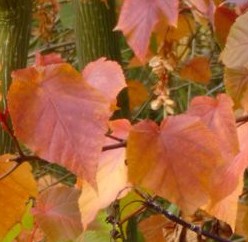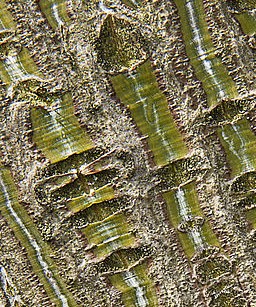 This small tree is native to Japan where it grows in the mountains along stream banks. The leaves unfurl red in the spring and change to mid green before changing to orange and red during fall coloration. They have three to five pointed lobes, are four to seven inches long, and are borne on red stems. Small greenish white male and female flowers are produced in separate pendulous racemes 2.5-4 inches long in late spring. The fruits are light pink and winged. The bark is smooth and has vertical, chalky-white stripes running the length of the trunk. The most heat tolerant of the snakebarks, this species is suitable for a small garden where it can provide shade and its bark enjoyed.
This small tree is native to Japan where it grows in the mountains along stream banks. The leaves unfurl red in the spring and change to mid green before changing to orange and red during fall coloration. They have three to five pointed lobes, are four to seven inches long, and are borne on red stems. Small greenish white male and female flowers are produced in separate pendulous racemes 2.5-4 inches long in late spring. The fruits are light pink and winged. The bark is smooth and has vertical, chalky-white stripes running the length of the trunk. The most heat tolerant of the snakebarks, this species is suitable for a small garden where it can provide shade and its bark enjoyed.
 Type: Deciduous tree
Type: Deciduous tree
Outstanding Feature: Striped bark; autumn coloration
Form: Spreading, rounded crown; often multi-stemmed
Growth Rate: Slow to moderate
Bloom: Greenish-white pendulous racemes 2.5-4” long of small male or female flowers in late spring
Size: 30-40’ H x 30-40’ W
Light: Sun, part shade
Soil: Average, medium moist, well-drained
Hardiness: Zones 5-7
Care: Watering when young during dry periods will speed up growth noticeably
Pests and Diseases: Aphids, horse chestnut scale, Verticillium wilt
Propagation: Seed.
